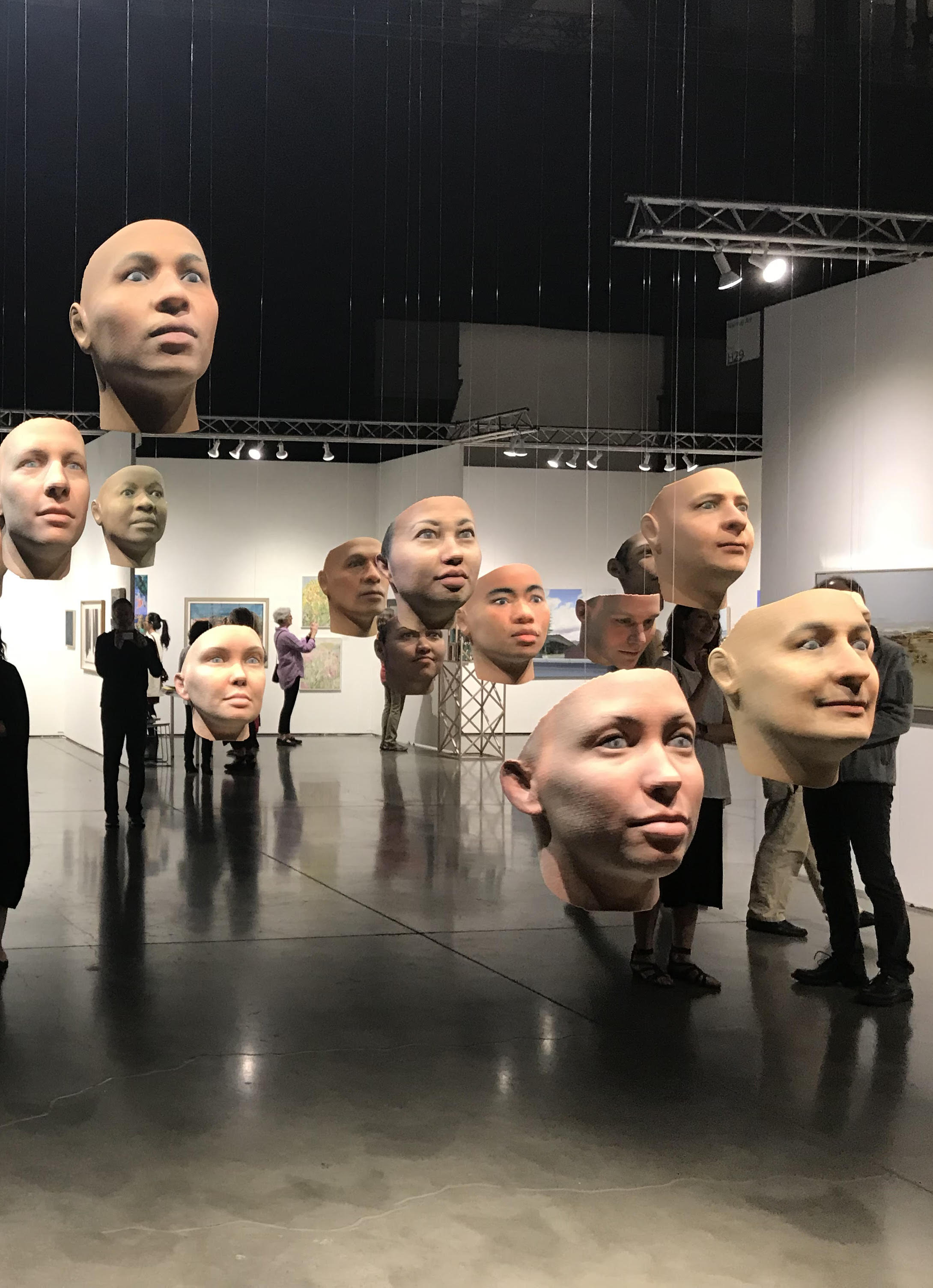
The image shown here captures a portion of a haunting and captivating art installation featured at this year’s Seattle Art Fair. The work was developed by artist Heather Dewey-Hagborg, who creates masks using the DNA of strangers left behind on cigarette butts, strands of hair, finger nail clippings or discarded chewing gum. The work intends to draw attention to issues of privacy and the dangers of genetic surveillance. There are countless DNA databases that are used today for academic research, detection of potential health issues and law enforcement. Some individuals don’t even know their genetic information is a part of these databases. Surprisingly, many have freely, and perhaps unwittingly, submitted their DNA to companies that help uncover their ancestry. Regardless, the laws that protect individuals against the misuse of their most personal information — DNA — is woefully inadequate.
The artist’s work suggests riding the subway or sitting on a park bench and leaving trace DNA behind is essentially the same as leaving copies of your medical records on the seat after you move on. Linking this information with other databases that track our behavior and financial transaction could prove even more devastating. Interestingly, Dewey-Hagborg believes the only way to combat the misuse of this information is to develop counter measures. As a part of her work she has developing a piece entitled Invisible — a two-part spay that removes 95% of trace DNA and obscures the remaining 5%. To date this is the only know counter surveillance technology that focuses on protecting one’s DNA. Dewey-Hagborg is a genetic scientist turned artist, exposing the power, wonders and dangers of science in the most impactful, poetic and eerily beautiful way. Making the real unreal.
